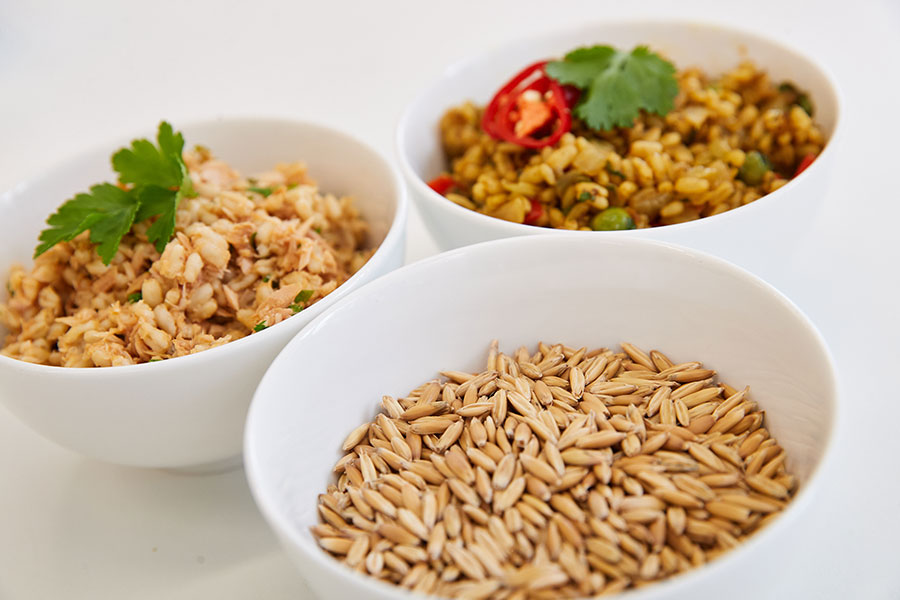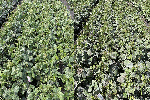Did you know that oat porridge has been found in Neolithic bog bodies in Europe dating back 5000 years?
Our Stone Age forebears from Europe obviously benefited from the nutritional value of oats.
In modern times, with the need to address nutritional challenges and with state-of-the-art science able to unravel the unique nutritional properties of the oat grain, oats are in the spotlight. Consumers around the world stand to benefit from the grain and the nutrition knowledge now available.
A team of cereal scientists from the Australian Export Grains Innovation Centre (AEGIC) is looking at novel products through which to market Australian oats into South-East Asian markets. The goal is to attract Asian consumers to oats with minimal dietary changes. But Australians also stand to gain in the move to take oats beyond simply being a breakfast staple, as we have a highly Asian cuisine influenced palate.
The research initially focused on products suited to the Chinese market and was supported by a dedicated GRDC project. It has since expanded to South-East Asian countries and now receives significant support from the Western Australian Government through the Department of Primary Industries and Regional Development (DPIRD), in addition to the core GRDC/DPIRD investment in AEGIC.
WA growers, in particular, stand to benefit from this work as the state has easy access to expanding export oat markets in South-East Asia.
Oat features
Most oat-based food products contain wholegrain oats, which is a major advantage as consumers benefit from the bran and germ that is not removed in processing as with other cereals.
Oats are naturally rich in beta-glucan – a soluble fibre that improves blood glucose control, insulin responses and helps decrease cholesterol (Table 1). They are high in protein and lysine, as well as being rich in minerals and vitamins and containing high levels of antioxidants such as vitamin E. More-recent research shows that oats contain avenanthramides – a unique phytonutrient that helps protect blood vessels from the damaging effects of low-density lipoprotein cholesterol.
Table 1: Comparison of cereal nutritional components
Proximate Nutritional Composition (g per 100 g) | Oatmeal | Wholegrain Wheat | Brown Rice | Pearled Barley |
Water | 8.5 | 12.0 | 12.2 | 10.3 |
Carbohydrate | 58.7 | 60.2 | 73.9 | 69.7 |
Protein | 14.0 | 13.5 | 7.4 | 9.2 |
Fat | 8.0 | 2.1 | 2.8 | 1.6 |
Beta-glucan (fibre) | 4.4 | 0.8 | 0.1 | 4.2 |
Source: Welch, R. W. 2011. Pages 95-107 in: Oats: chemistry and technology. Nutrient composition and nutritional quality of oats and comparisons with other cereals. F.H. Webster and P.J. Wood, eds. AACC: St. Paul, MN, USA.
As consumers worldwide and especially in Asia are becoming more health-conscious due to the rise in lifestyle diseases, the potential to introduce beneficial nutritional components of oats into Asian diets presents an opportunity to expand the market for Australian oats.
Novel products
AEGIC has been exploring options to use oats as a key ingredient in Asian products to enhance their nutritional value, many of them non-breakfast products, which inturn will promote increased daily oat consumption.
It has developed innovative ways to improve processing of oat noodles and oat rice with appealing qualities. For example, it has developed AEGIC 100 per cent wholemeal oat noodles with a standardised processing method without the use of additives. AEGIC’s method uses optimum processing conditions to produce oat noodles with preserved beta-glucan, good shelf life and appealing sensory properties. These noodles can be processed into dried, frozen or ready-to-eat styles.
AEGIC has also developed ‘oat rice’, a product that can be prepared and eaten like traditional rice but with the health benefits of oats. AEGIC’s oat rice has twice as much dietary fibre as brown rice, fewer carbohydrates, more protein, and a greater concentration of healthy unsaturated fatty acids. This innovation has improved oat rice processing yield and efficiency, allowing for the retention of beta-glucan and sufficiently deactivated rancidity-causing enzymes (increasing shelf life).
AEGIC is currently commercialising the intellectual property for these two products.

Oat products: (clockwise from left) tuna rice, nasi goreng and whole oats. Photo: AEGIC
AEGIC has also developed other innovative oat ingredients such as beta-glucan-rich fractions using innovative technology and demonstrated its application as a thickening agent (for example, in thickening sauces and gravies) and for fortification (bubble tea pearls and baked products).
Oat semolina processed from innovatively treated oat grains can be used to make various traditional food products in South Asia as well as couscous style products commonly consumed in Middle Eastern countries.
Challenges
There are multiple challenges in processing oats into products and AEGIC has been innovative in overcoming these. In particular, oats lack gluten, which has visco-elastic properties, and this makes it challenging to process products such as oat noodles. Using proprietary techniques it has been able to overcome this and produce quality noodles with satisfying mouthfeel.
The beta-glucan fraction of oats is one of the most desirable nutritional traits, so it is important to optimise processing conditions to preserve this fraction as well as other nutritional components.
Next steps
AEGIC will continue to develop innovative processing technologies for oats and new products to capitalise on expanding markets.
Additionally, it is investigating the influence of Australian oat varieties on processing performance and end-product qualities of oat rice and oat noodles. Oat varieties will be sourced from different growing locations across different seasons to understand the impact of genetics and environment.
This information will enable AEGIC to better advise oat purchasers, processors and food manufacturers about varietal impacts on process and product quality and assist in targeted marketing. This work will help it identify the oat grain quality requirements for new innovative oat products and this information will assist Australian oat breeders to set appropriate breeding targets.
As China is a major export market for Australian oats, to mitigate this market concentration risk, AEGIC technical experts will continue to deliver educational webinars on Australian oats and innovative oat products for South-East Asia and other potential markets.
More information: Jack King, Jack.King@aegic.org.au

























































